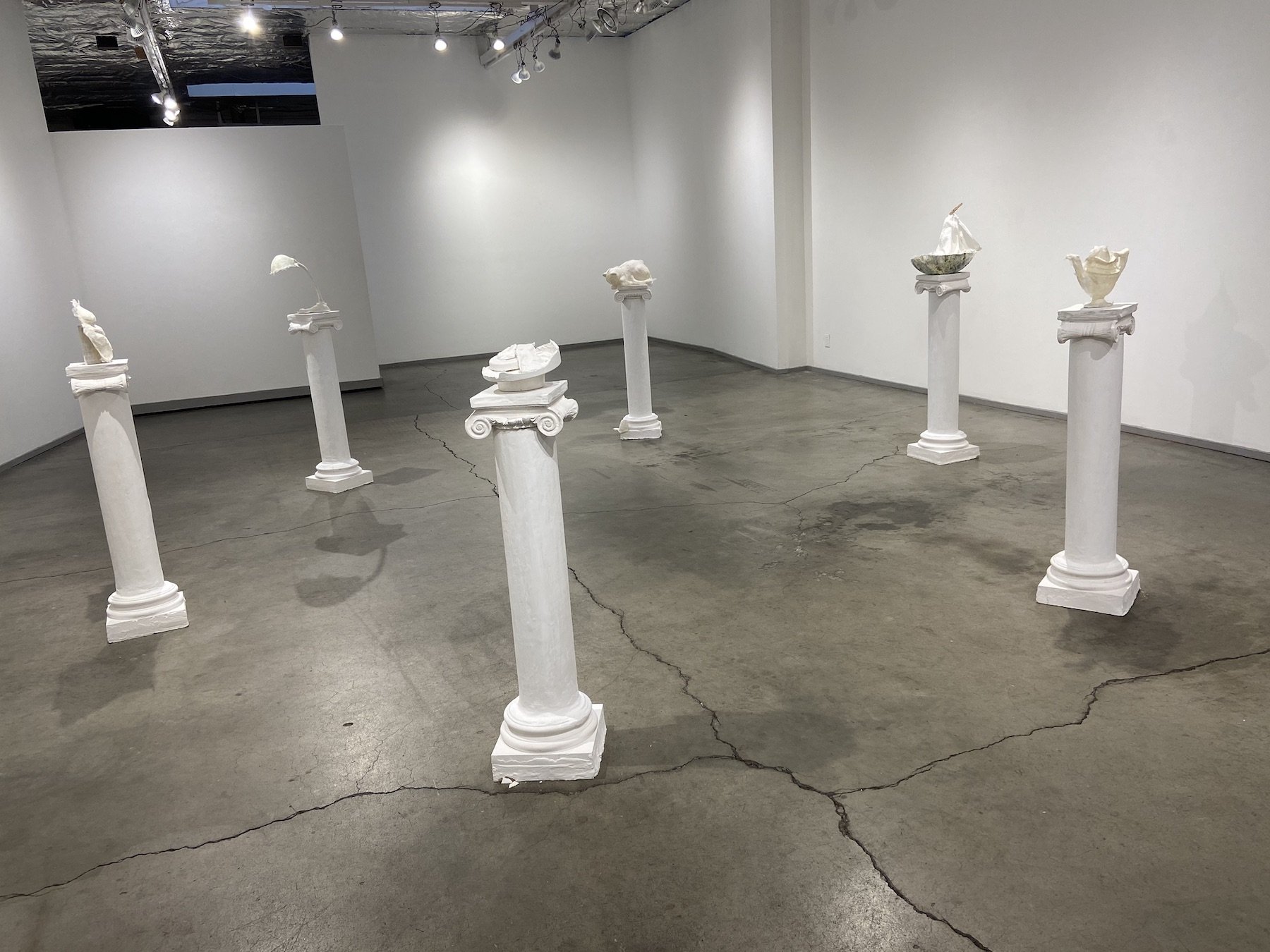
In this installation, I consider the hidden aspects of identity – race, class, and culture – and how they undergird my artmaking as a white, middle-class woman, artist, wife and mother. It is important to understand my own context in order to better understand the stories and contexts of others. Hand-cast columns and paper-mache formed over found and hand-made objects. 2020-2021.
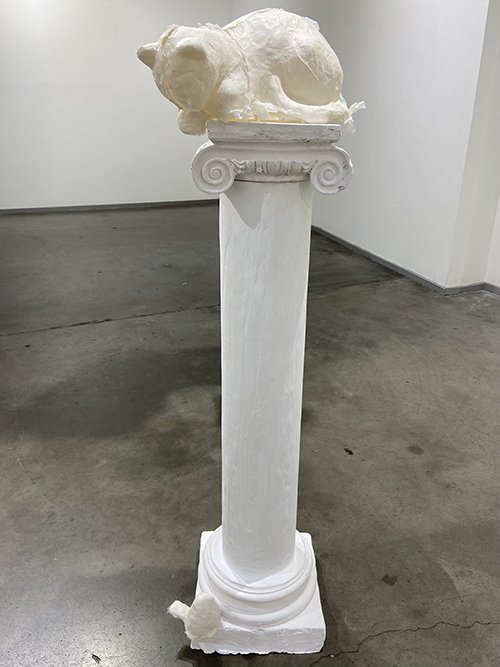
Tissue paper mache, cheese cloth, hydrocal plaster; 12x12x48’; 2021
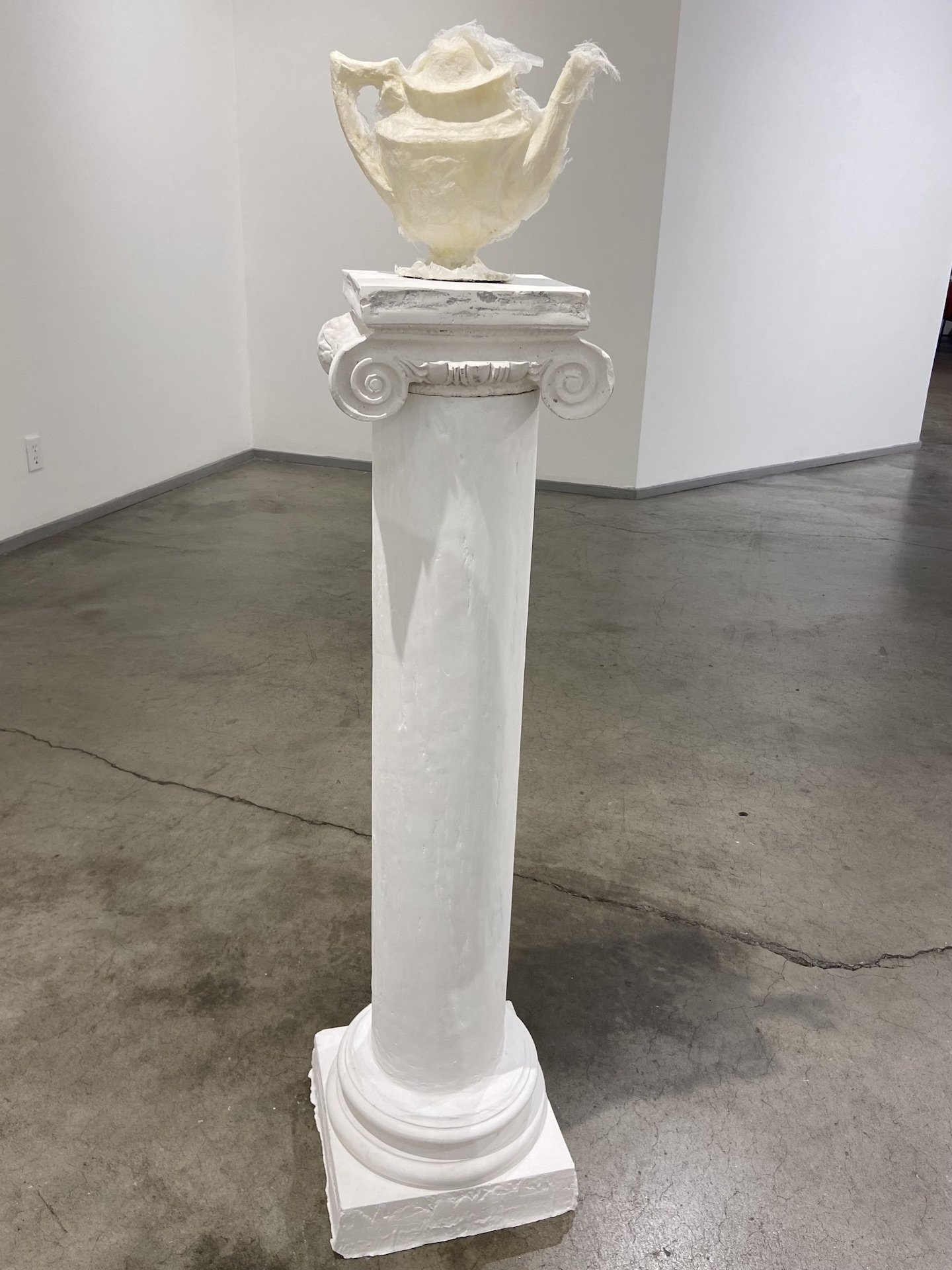
Paper mache, cheese cloth, hydrocal; 12x12x48”; 2020
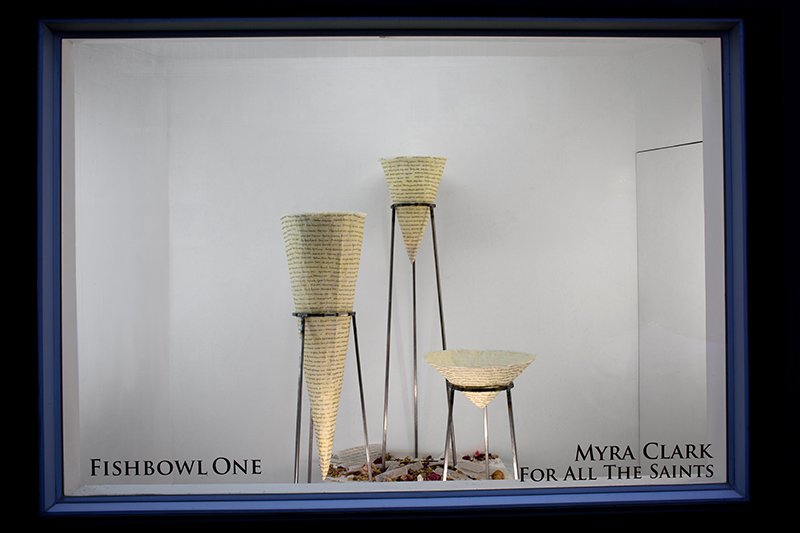
Three paper mache cone lamps are inscribed with the names of Black people killed by police as tracked by the Washington Post webpage “Fatal Force,” as well as the names of the Civil Rights martyrs (as designated by the Southern Poverty Law Center), and names from the Gonzaga University Equity, Justice and Inclusion Center. There have been 1600 Black people killed by police since 2015; the cones memorialize 815 people from the sources named, and more will be added as the project continues.

Written in gold ink pen on tissue paper pages, the names are cut apart and glued onto the cones in date order beginning when the piece was installed in November, 2021. Paper mache, welded steel, gold ink, battery-operated candle. 2021.
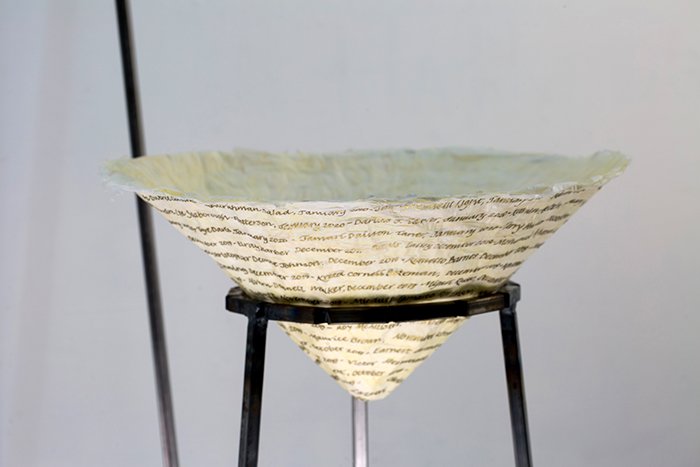
Short cone with names inscribed from 2018. Each cone has a welded steel stand. (Tissue paper mache, gold ink, welded steel, battery-operated candle. 2021).
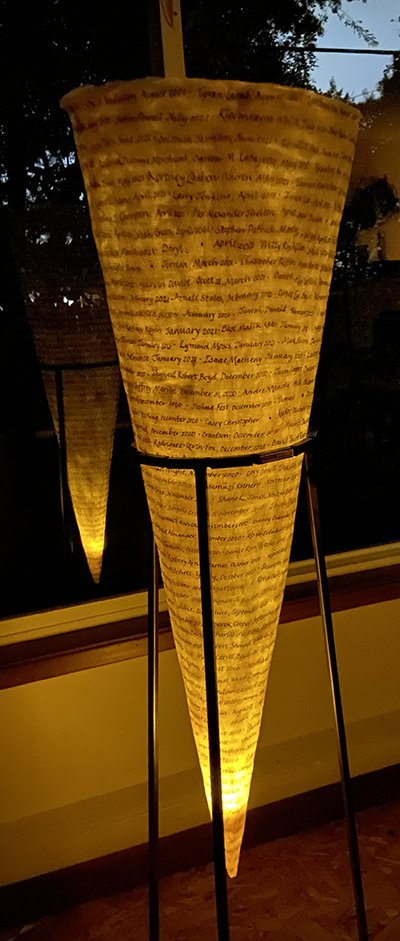
The cone lamps are reminiscent of lamps used in churches to remind the faithful of the Divine Presence. The installation lamps are lit with battery-operated candles. (Paper mache, gold ink, welded steel, battery-operated candle. 2021).
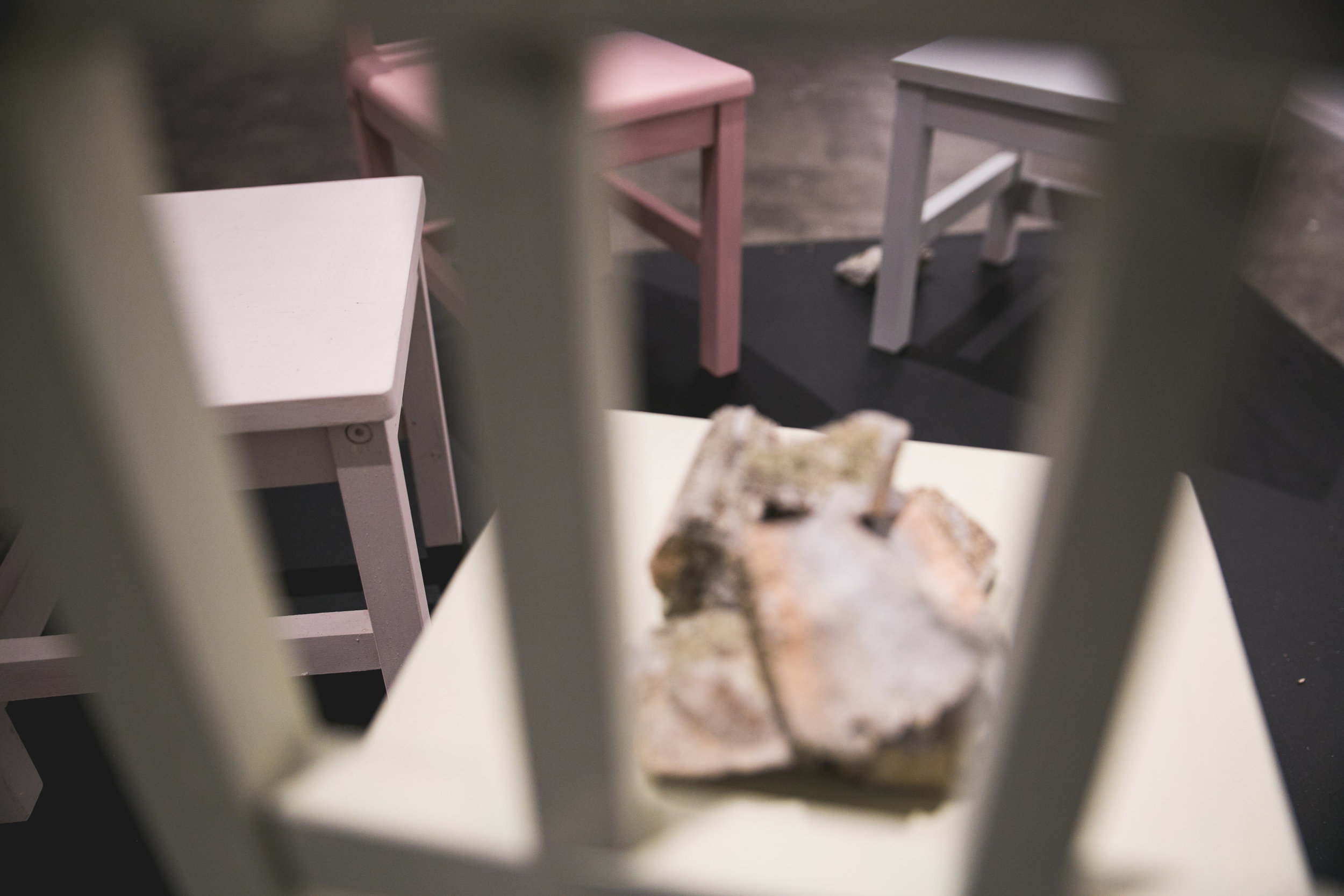
The rocks in this piece have evoked questions about the meaning of sanctuary, rocks as symbols for returning to the earth, as signs of remembrance of those deceased, and as grave markers; Children’s chairs, milkpaint, rocks, found stage flooring. 2018
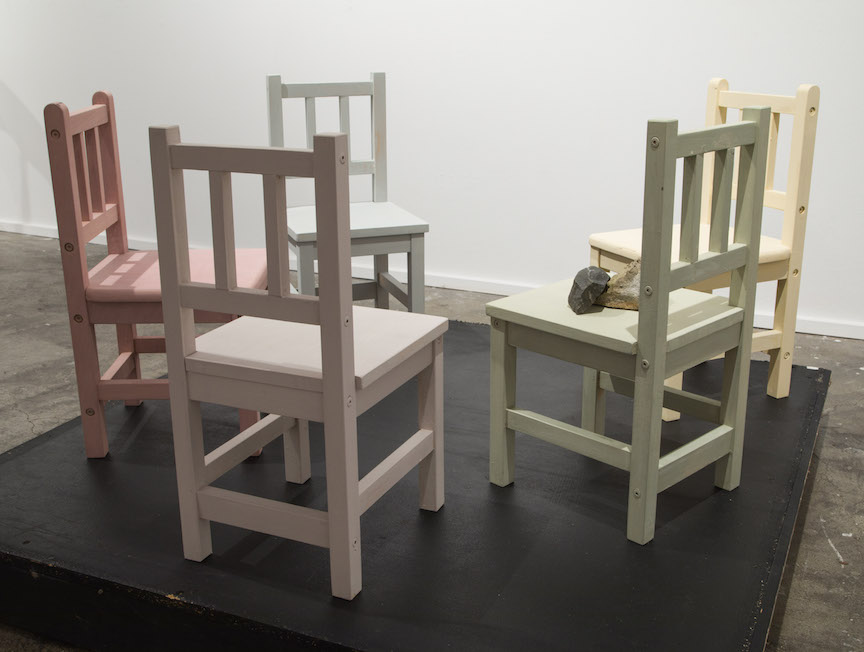
Five chairs painted with milkpaint and a rock. Mounted on found stage flooring. 2018

Children’s chairs, milkpaint, and rocks; mounted on found stage flooring. 2018.

This site-specific installation for the chapel at First Congregational United Church of Christ in Portland, Oregon was offered as a co-text for the adult education series on immigration and the United Nations Bill of Human Rights. The class took place in the midst of the installation, with the Santos of Mary and Jesus referencing the Holy Family as archetypal refugees.

The first image of the installation is a traditional wood carved Santos of Mary and Jesus, artist and date unknown, probably from Central or South America. The Mother and Child, as archetypal refugees, speak to issues involving families trying to cross the US southern border. The cardboard box on which this is placed is marked “Sunday,” and the figures are surrounded by dried weeds from the Columbia Gorge.

Part II: Children's shoes, broken eggshells, dried roses (symbol of the Virgin Mary), and St. Christophers medals (the controversial patron saint of travelers) are placed at the door.

Part III: A tumbleweed is placed on a Mexican plate, in front of a mandorla, a shape that often surrounds images of the Virgin Mary. This one is green, the color of the cloak of Our Lady of Guadalupe, and is covered with roses. Roses are the sign she gave Juan Diego, a meztizo, and the first to see her. They are a symbol of her veracity. This portion of the installation is grounded in traditional religious visual language that brings contemporary issues to the forefront.
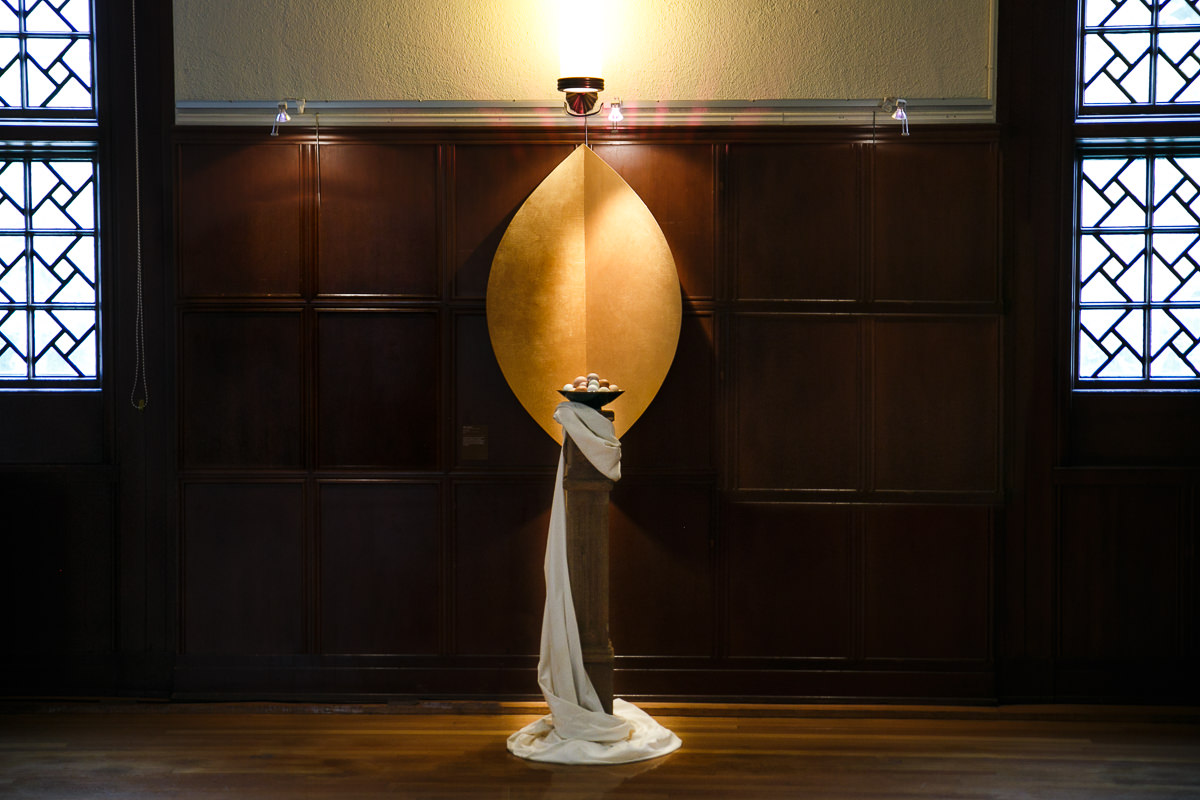
“Mary’s Tangle” refers to Mary Magdalene, who was also known as the “Apostle to the Apostles.” Although scriptural evidence indicates she was an important follower of Christ and is mentioned seven times in the Gospels, the tradition in the Western Church has been to conflate her with other Marys in scripture. This includes a prostitute, who although unnamed, famously led to the “virgin/whore” dilemma that has condemned women throughout the centuries. It is an example of the patriarchy at one of its worst moments and has had far-reaching consequences. Hence the title of this piece: Mary’s Tangle is a piece reflecting on the role of women while at the same time placing women in a place of high honor. We owe it to her and to ourselves to untangle her story and contributions both during her own time and during ours.

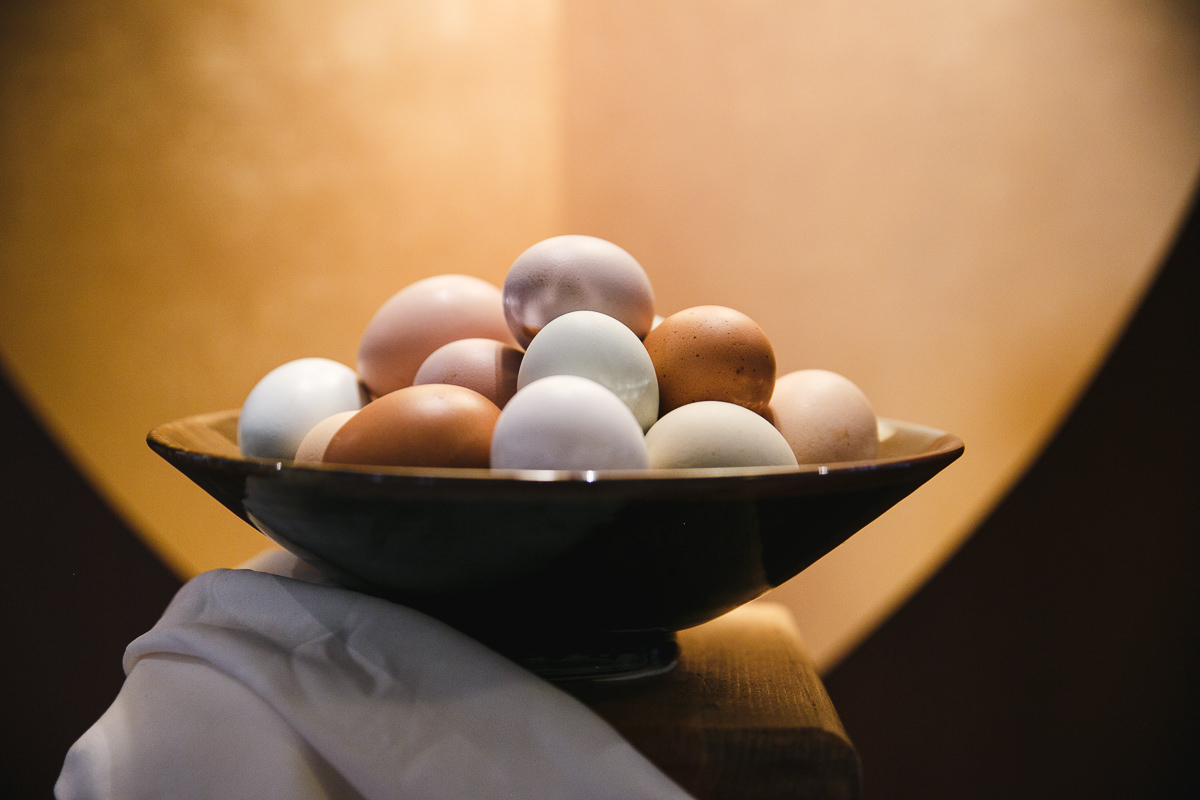
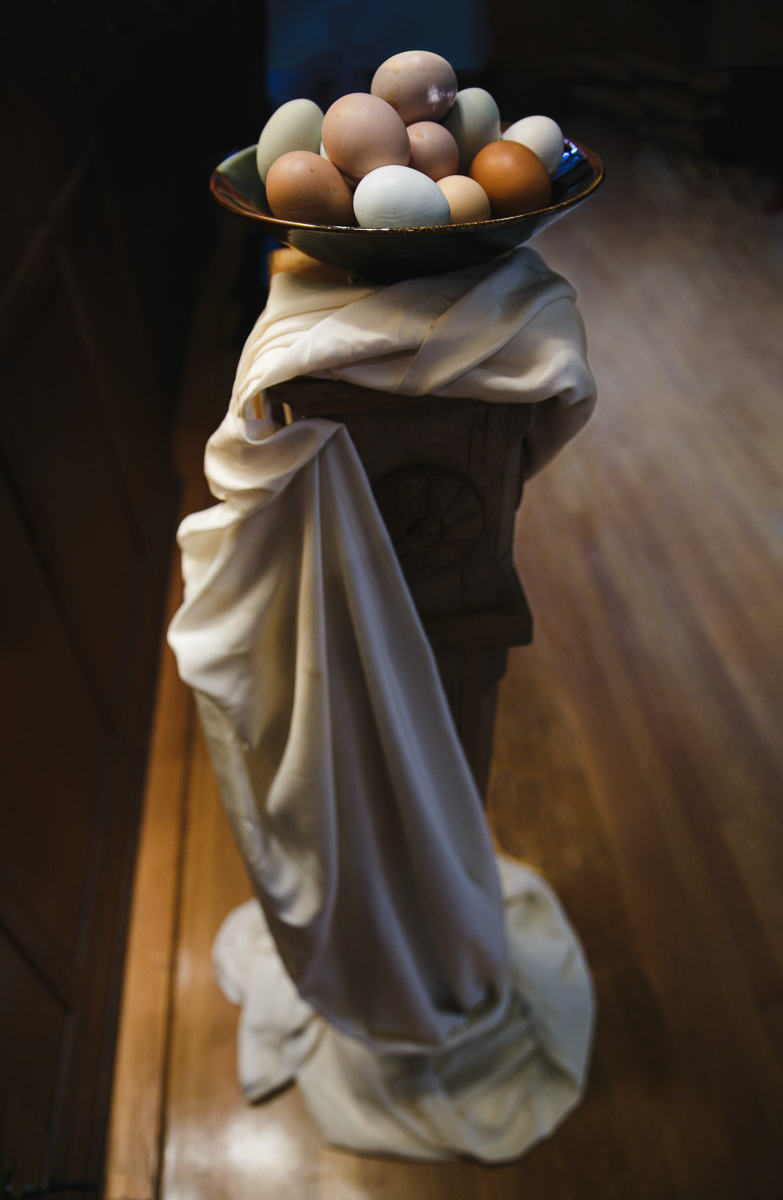
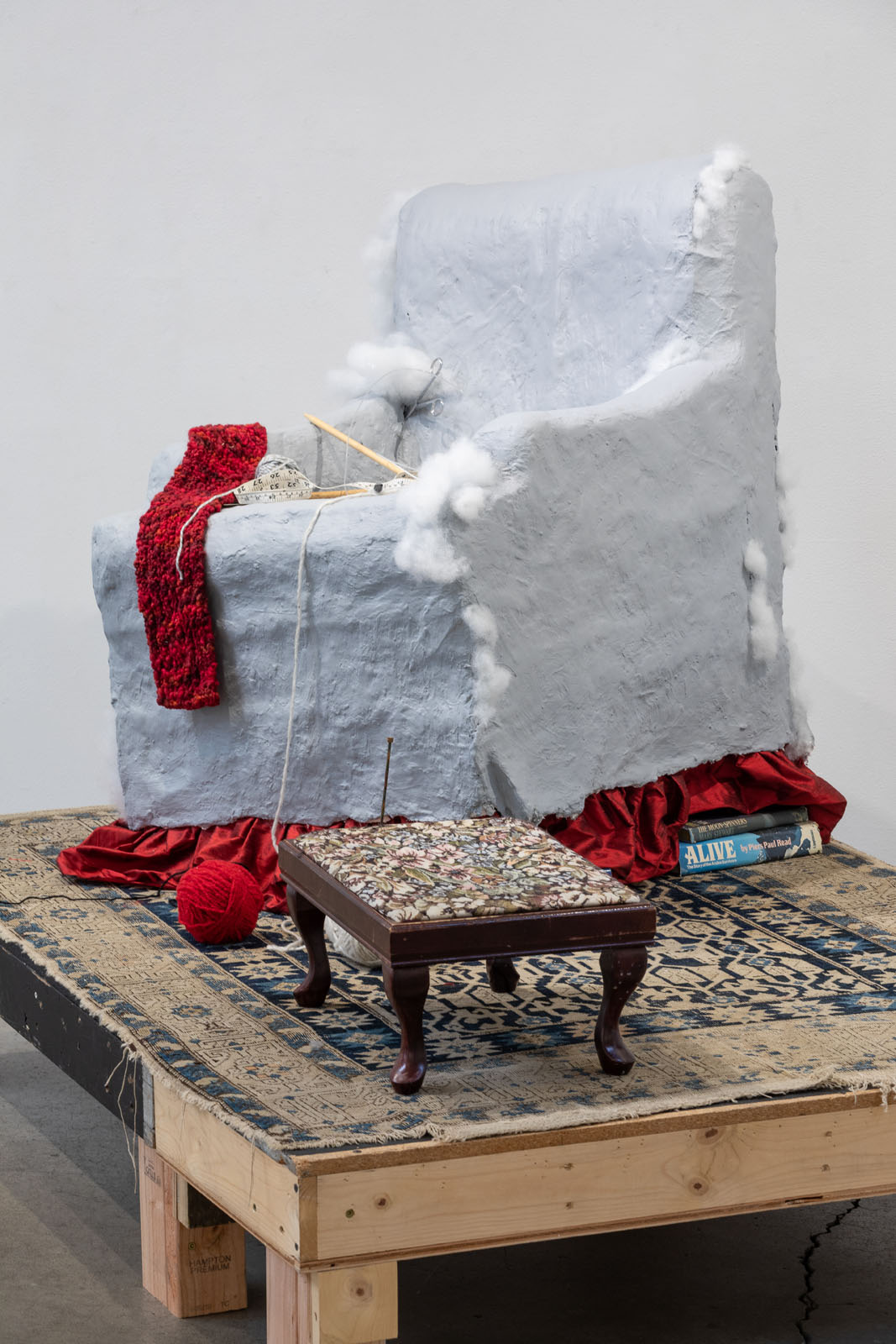
This installation is in response to my mother’s dementia, and the mental, emotional, and physical journey that has stemmed from her condition. In this piece, I made a representation of her chair from hydrocal and plaster strips, along with an ruffled underskirt made with red silk from her fabric stash. An inveterate seamstress and knitter, I used knitting needles in this installation impaled in holes in the chair that have stuffing erupting from them. Her chair is tilted with some of favorite books holding it up. The footstool completes the scenario.
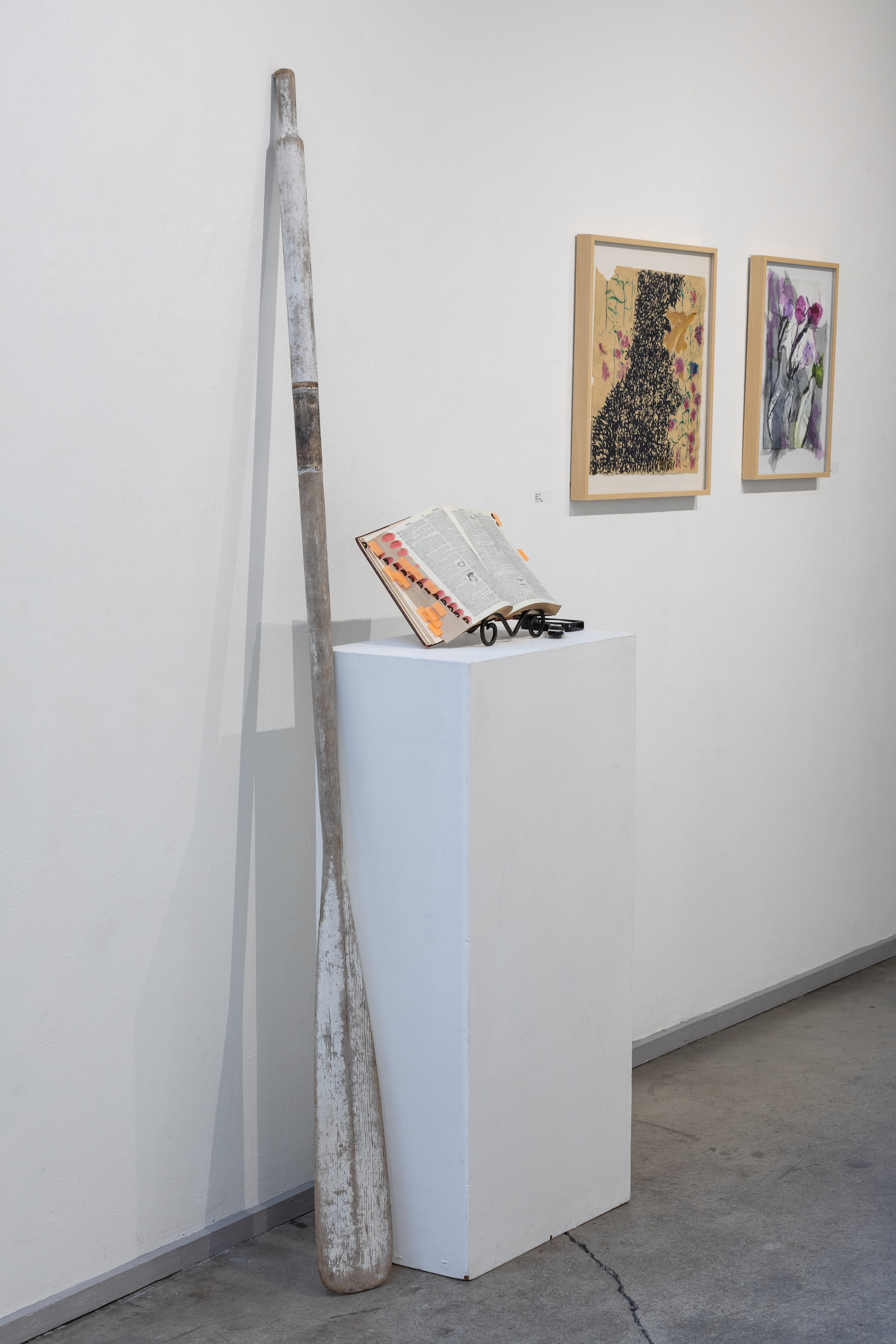
This piece has captured the missing paddle from the first part of the installation. It rests beside a dictionary in which I tabbed and highlighted words that describe aspects of my mother such as “organist” and “books.” Some aspects she has forgotten, others are still part of what she claims with her current identity.
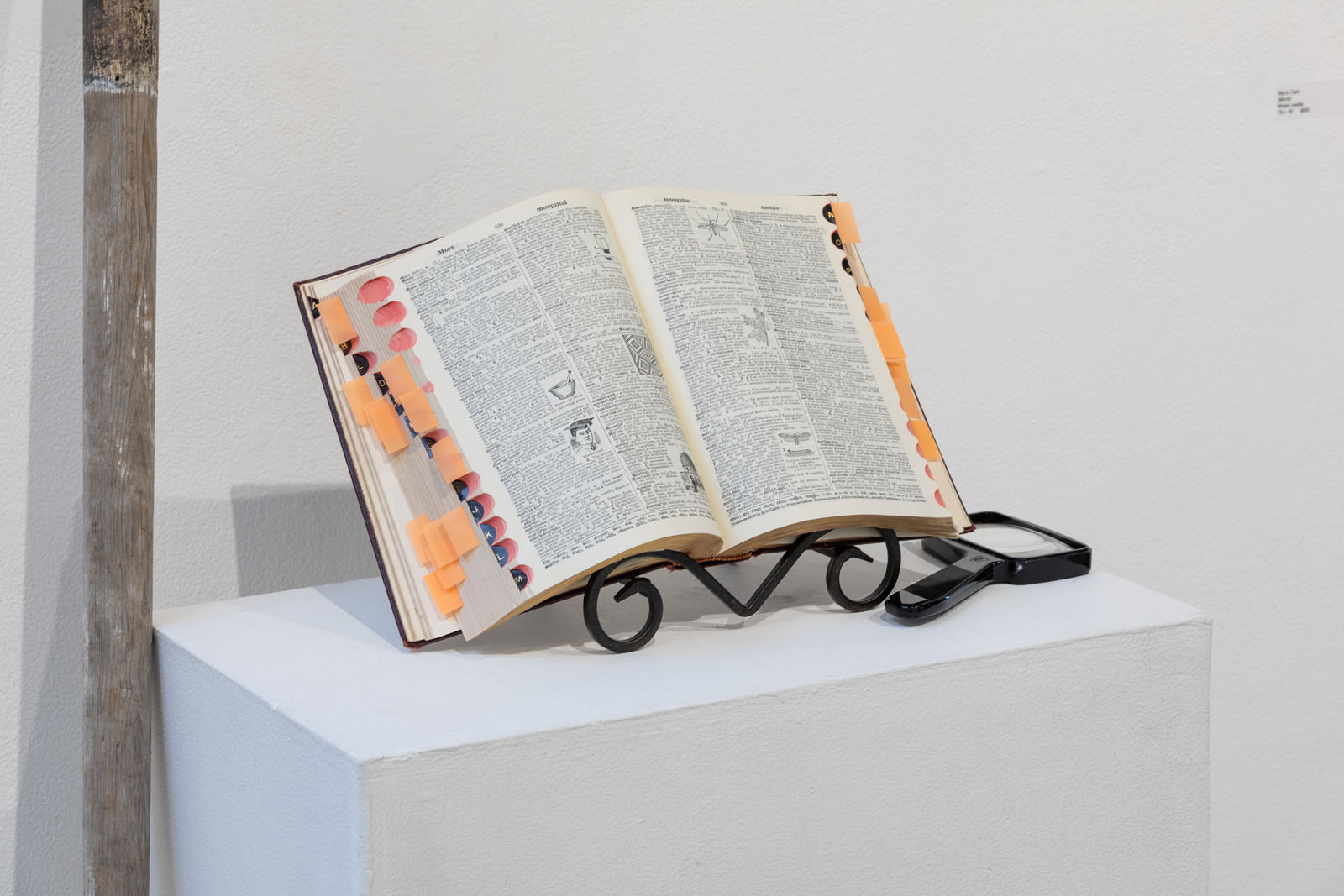
See previous description.

A navigational chart of the San Juan Islands charts out a journey that I often took with my grandparents in the summer, forming the base of this section of the installation. The chart is a reminder that life is full of surprising, often unexpected destinations, even with a map. A bowl filled with the ashes of objects from the past, a bowl of dried rose petals, and a bowl of eggs rest as if offerings on an altar, with an icon of the Virgin Mary beckoning to what lies beyond life as it has been previously known.
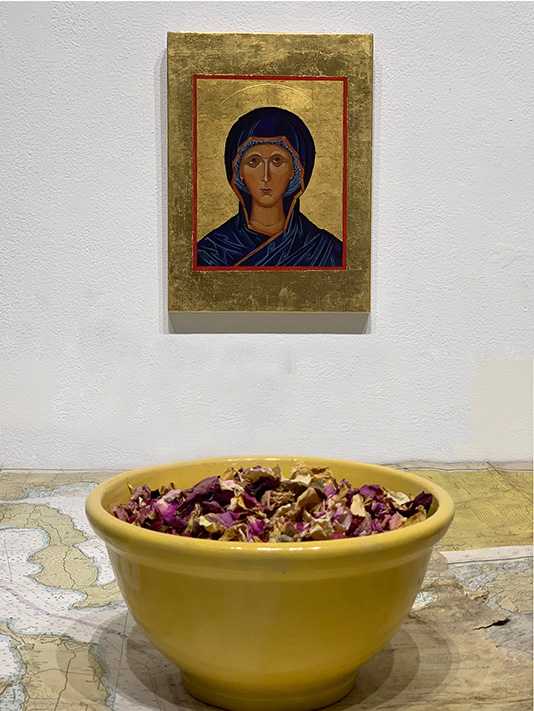

“Sanctuary” is a three-part presentation of three areas where I have been challenged by my own expectations and hopes for shelter and safety: the church, childhood, and home. Where do we find sanctuary? In place of an artist talk, I invited a young friend who had been forced out of Bosnia during a war with Croatia and returned years later to interview and film people her age who had stayed on with their parents. Her film, and the discussion that followed brought the challenges of defining “sanctuary” directly into the personal and the spiritual.

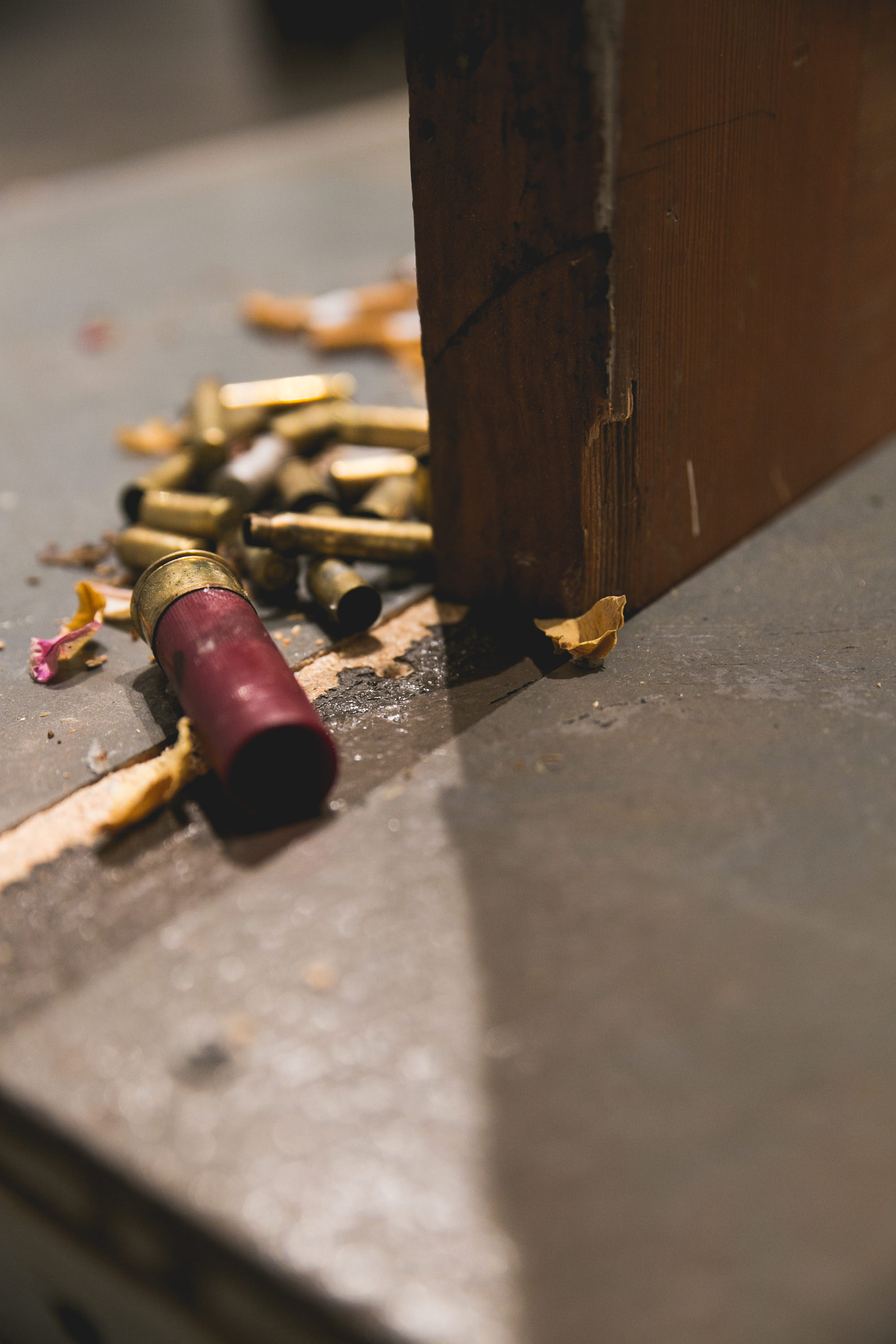
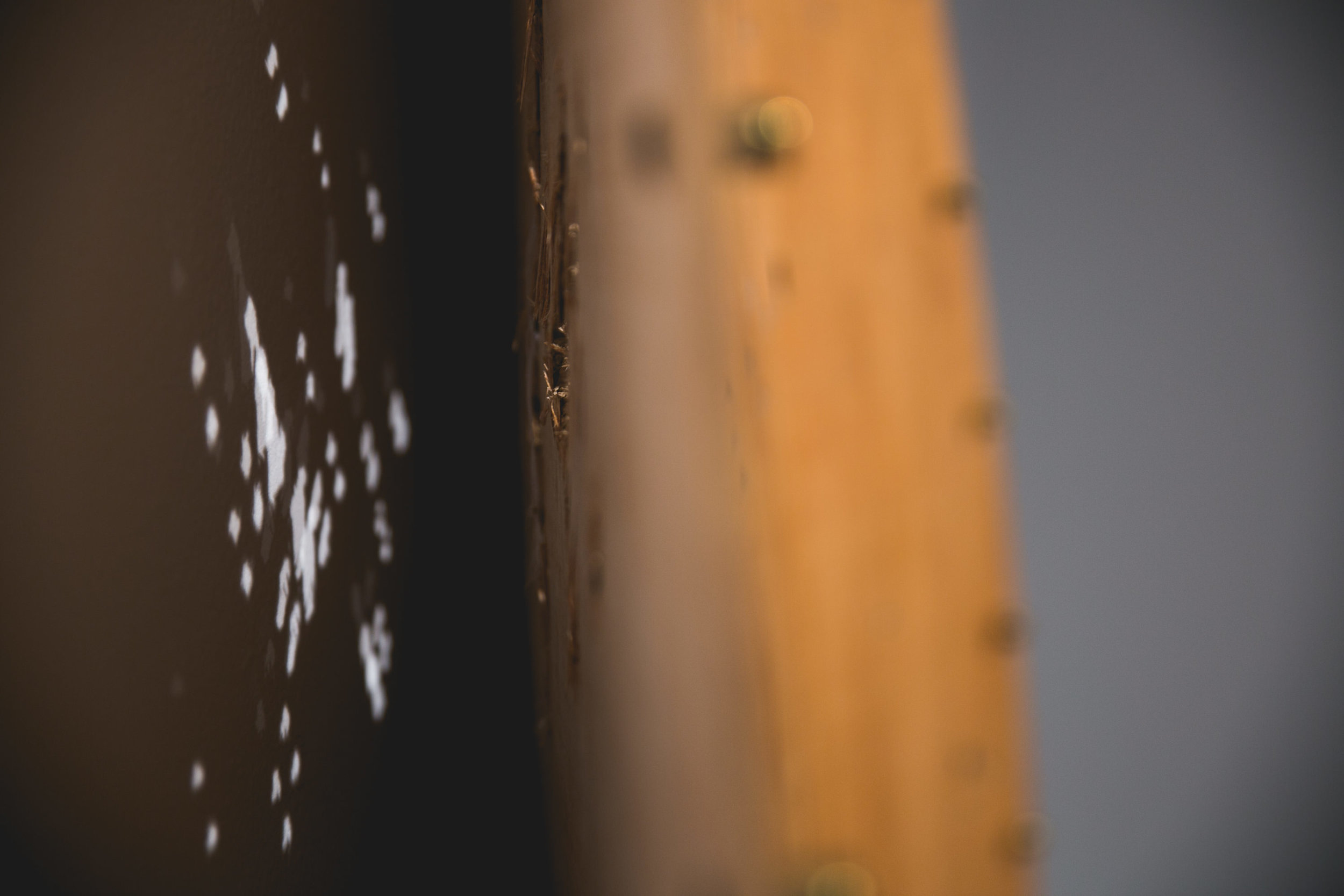
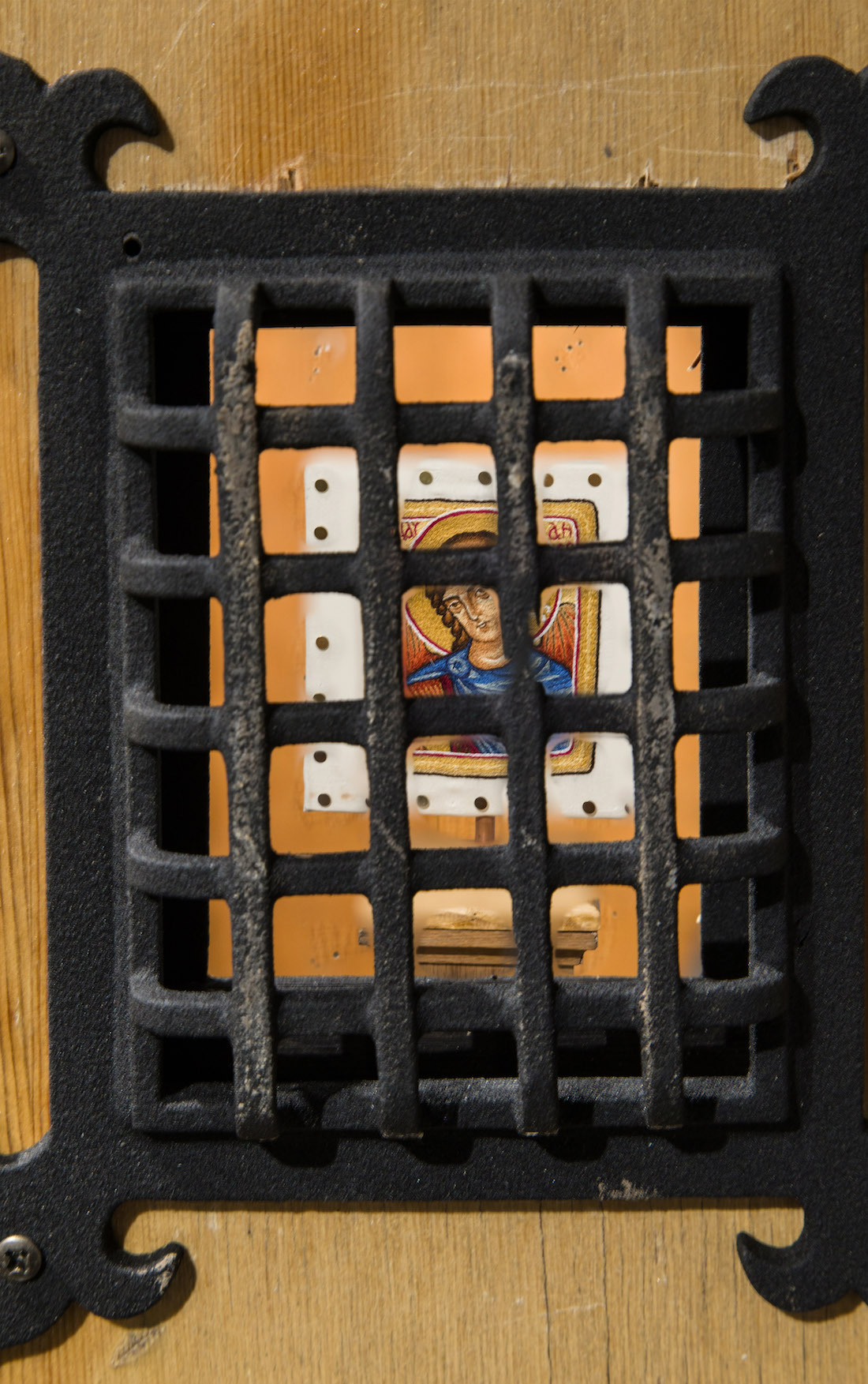
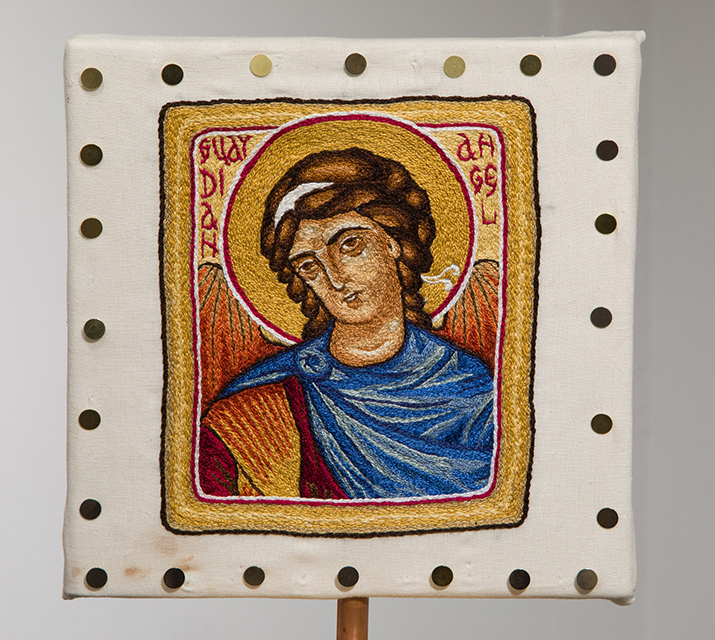
Hand -embroidered icon, cotton floss on linen with upholstery tacks. 12x12” mounted on copper dowel on wooden newell post (not visible).
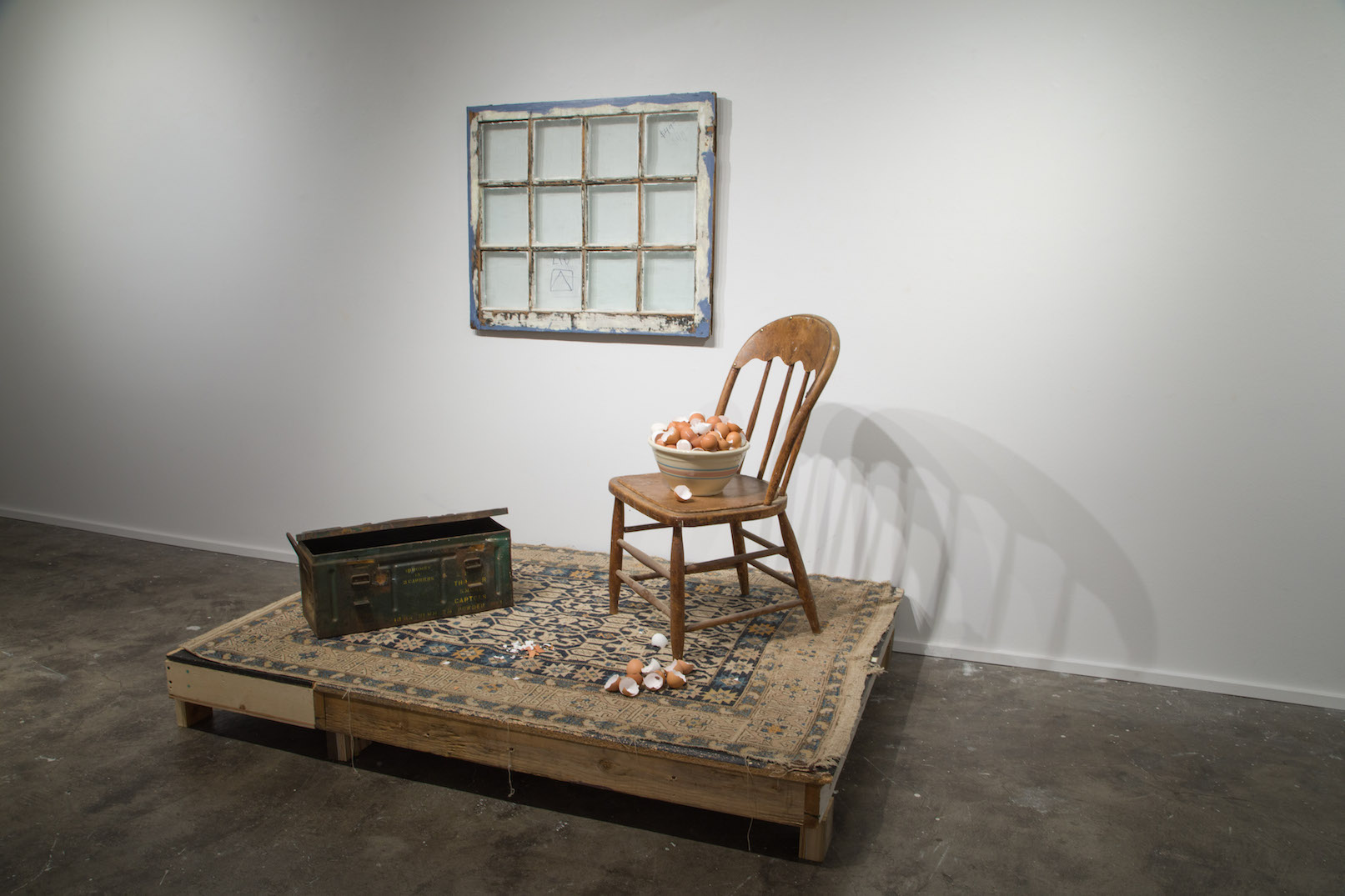
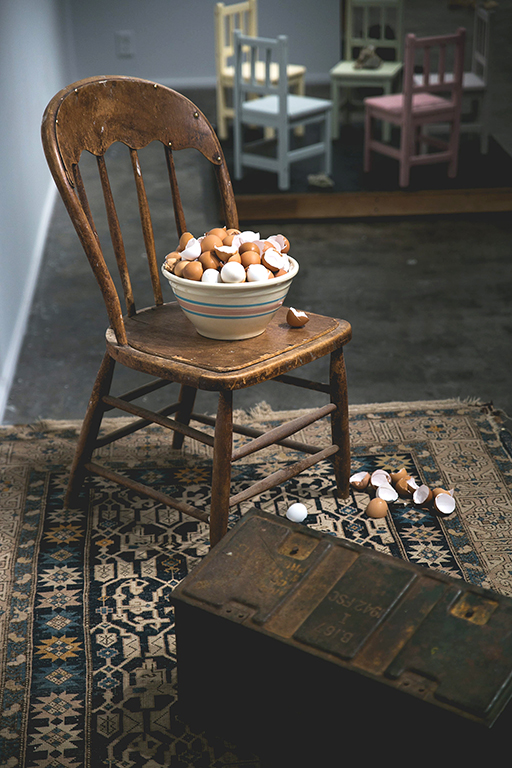
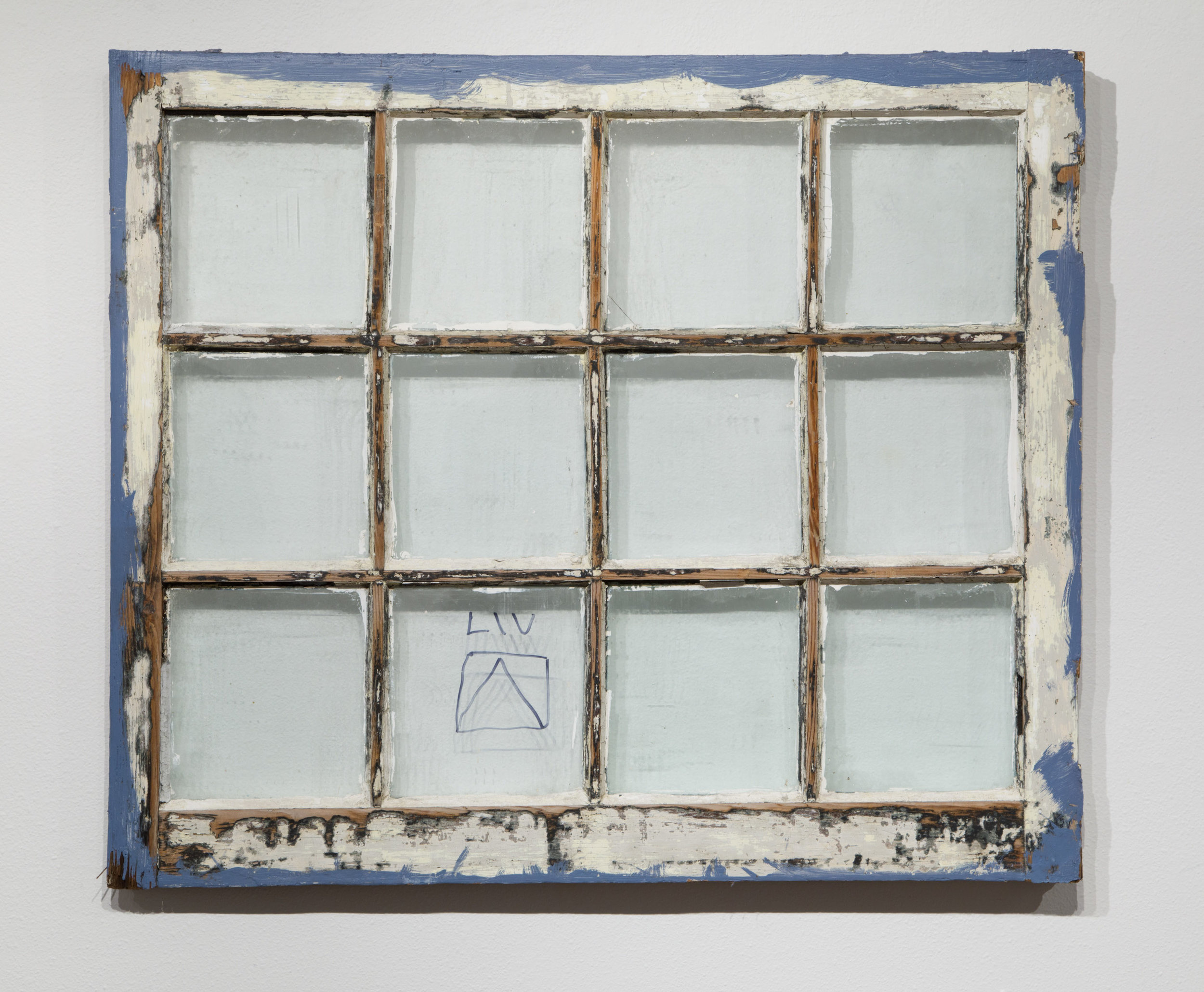
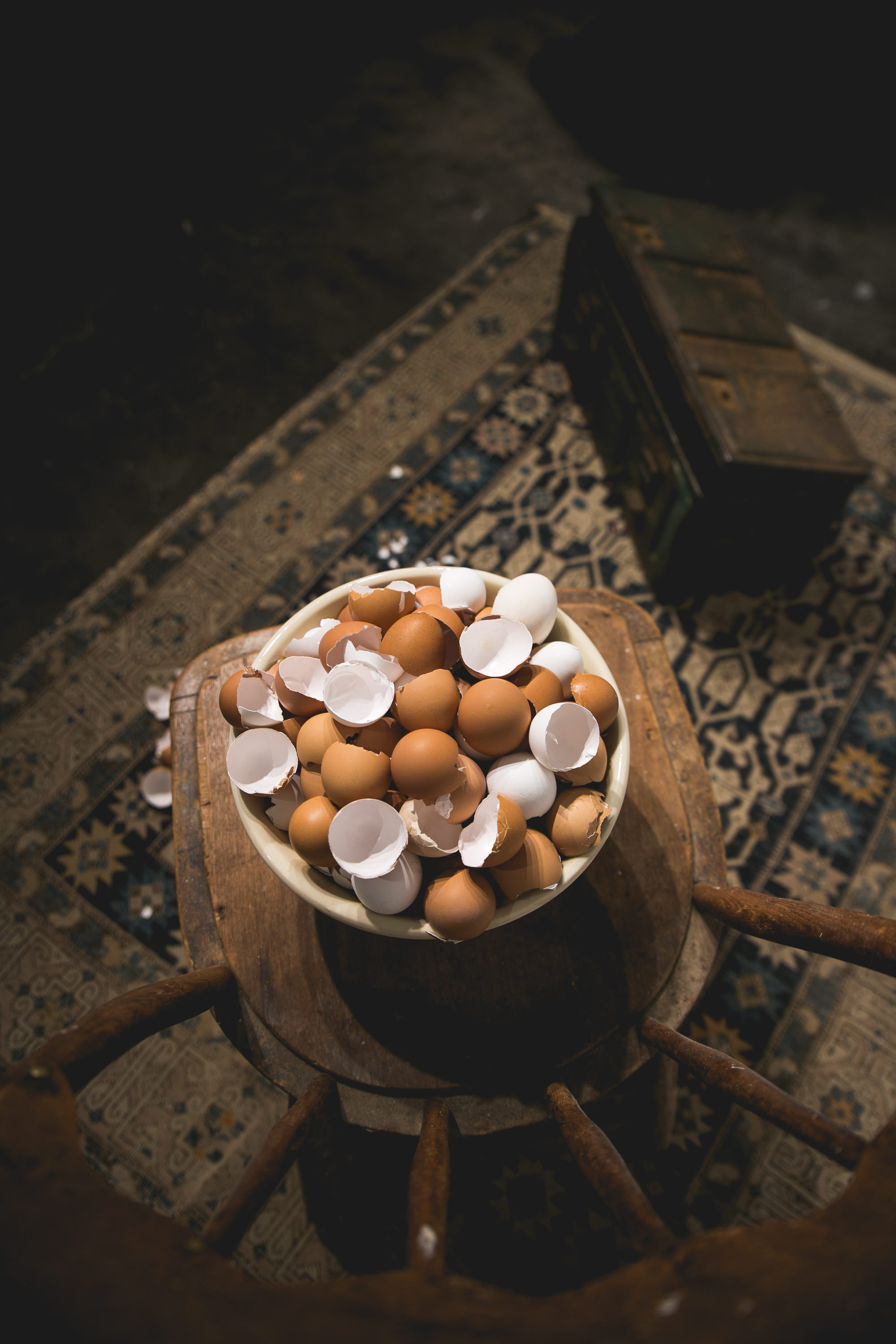

































In this installation, I consider the hidden aspects of identity – race, class, and culture – and how they undergird my artmaking as a white, middle-class woman, artist, wife and mother. It is important to understand my own context in order to better understand the stories and contexts of others. Hand-cast columns and paper-mache formed over found and hand-made objects. 2020-2021.
Tissue paper mache, cheese cloth, hydrocal plaster; 12x12x48’; 2021
Paper mache, cheese cloth, hydrocal; 12x12x48”; 2020
Three paper mache cone lamps are inscribed with the names of Black people killed by police as tracked by the Washington Post webpage “Fatal Force,” as well as the names of the Civil Rights martyrs (as designated by the Southern Poverty Law Center), and names from the Gonzaga University Equity, Justice and Inclusion Center. There have been 1600 Black people killed by police since 2015; the cones memorialize 815 people from the sources named, and more will be added as the project continues.
Written in gold ink pen on tissue paper pages, the names are cut apart and glued onto the cones in date order beginning when the piece was installed in November, 2021. Paper mache, welded steel, gold ink, battery-operated candle. 2021.
Short cone with names inscribed from 2018. Each cone has a welded steel stand. (Tissue paper mache, gold ink, welded steel, battery-operated candle. 2021).
The cone lamps are reminiscent of lamps used in churches to remind the faithful of the Divine Presence. The installation lamps are lit with battery-operated candles. (Paper mache, gold ink, welded steel, battery-operated candle. 2021).
The rocks in this piece have evoked questions about the meaning of sanctuary, rocks as symbols for returning to the earth, as signs of remembrance of those deceased, and as grave markers; Children’s chairs, milkpaint, rocks, found stage flooring. 2018
Five chairs painted with milkpaint and a rock. Mounted on found stage flooring. 2018
Children’s chairs, milkpaint, and rocks; mounted on found stage flooring. 2018.
This site-specific installation for the chapel at First Congregational United Church of Christ in Portland, Oregon was offered as a co-text for the adult education series on immigration and the United Nations Bill of Human Rights. The class took place in the midst of the installation, with the Santos of Mary and Jesus referencing the Holy Family as archetypal refugees.
The first image of the installation is a traditional wood carved Santos of Mary and Jesus, artist and date unknown, probably from Central or South America. The Mother and Child, as archetypal refugees, speak to issues involving families trying to cross the US southern border. The cardboard box on which this is placed is marked “Sunday,” and the figures are surrounded by dried weeds from the Columbia Gorge.
Part II: Children's shoes, broken eggshells, dried roses (symbol of the Virgin Mary), and St. Christophers medals (the controversial patron saint of travelers) are placed at the door.
Part III: A tumbleweed is placed on a Mexican plate, in front of a mandorla, a shape that often surrounds images of the Virgin Mary. This one is green, the color of the cloak of Our Lady of Guadalupe, and is covered with roses. Roses are the sign she gave Juan Diego, a meztizo, and the first to see her. They are a symbol of her veracity. This portion of the installation is grounded in traditional religious visual language that brings contemporary issues to the forefront.
“Mary’s Tangle” refers to Mary Magdalene, who was also known as the “Apostle to the Apostles.” Although scriptural evidence indicates she was an important follower of Christ and is mentioned seven times in the Gospels, the tradition in the Western Church has been to conflate her with other Marys in scripture. This includes a prostitute, who although unnamed, famously led to the “virgin/whore” dilemma that has condemned women throughout the centuries. It is an example of the patriarchy at one of its worst moments and has had far-reaching consequences. Hence the title of this piece: Mary’s Tangle is a piece reflecting on the role of women while at the same time placing women in a place of high honor. We owe it to her and to ourselves to untangle her story and contributions both during her own time and during ours.
This installation is in response to my mother’s dementia, and the mental, emotional, and physical journey that has stemmed from her condition. In this piece, I made a representation of her chair from hydrocal and plaster strips, along with an ruffled underskirt made with red silk from her fabric stash. An inveterate seamstress and knitter, I used knitting needles in this installation impaled in holes in the chair that have stuffing erupting from them. Her chair is tilted with some of favorite books holding it up. The footstool completes the scenario.
This piece has captured the missing paddle from the first part of the installation. It rests beside a dictionary in which I tabbed and highlighted words that describe aspects of my mother such as “organist” and “books.” Some aspects she has forgotten, others are still part of what she claims with her current identity.
See previous description.
A navigational chart of the San Juan Islands charts out a journey that I often took with my grandparents in the summer, forming the base of this section of the installation. The chart is a reminder that life is full of surprising, often unexpected destinations, even with a map. A bowl filled with the ashes of objects from the past, a bowl of dried rose petals, and a bowl of eggs rest as if offerings on an altar, with an icon of the Virgin Mary beckoning to what lies beyond life as it has been previously known.
“Sanctuary” is a three-part presentation of three areas where I have been challenged by my own expectations and hopes for shelter and safety: the church, childhood, and home. Where do we find sanctuary? In place of an artist talk, I invited a young friend who had been forced out of Bosnia during a war with Croatia and returned years later to interview and film people her age who had stayed on with their parents. Her film, and the discussion that followed brought the challenges of defining “sanctuary” directly into the personal and the spiritual.
Hand -embroidered icon, cotton floss on linen with upholstery tacks. 12x12” mounted on copper dowel on wooden newell post (not visible).